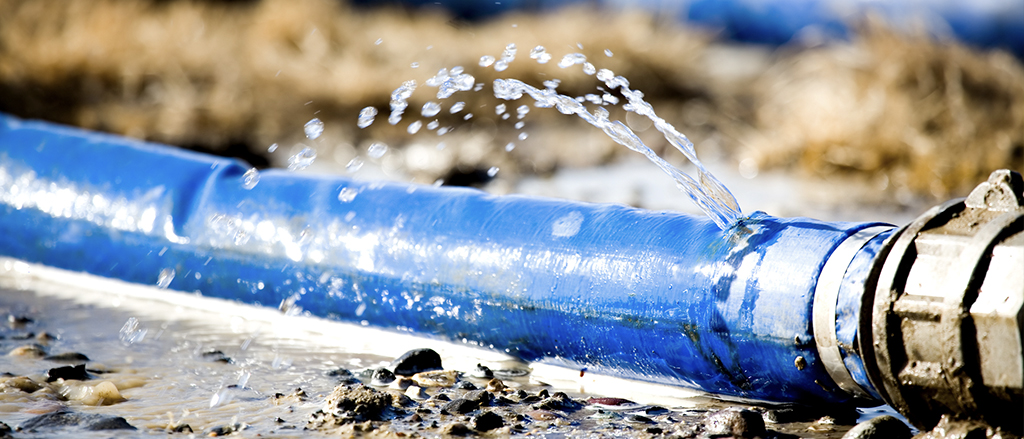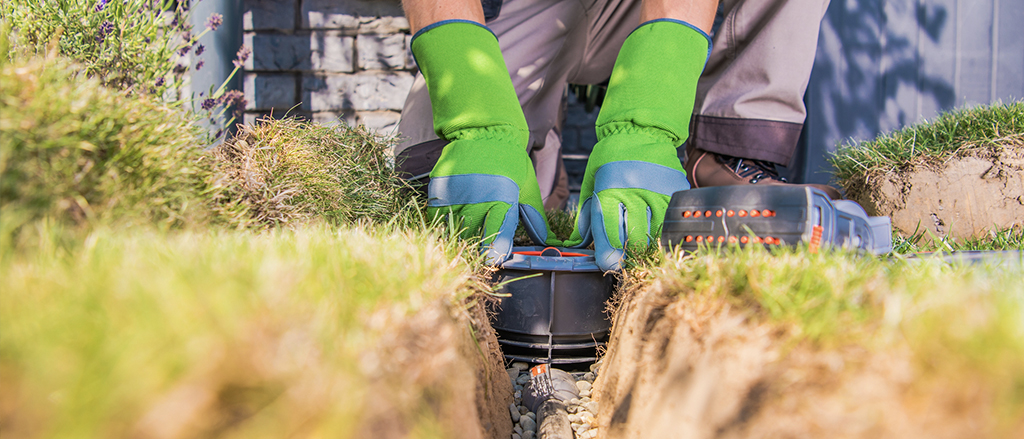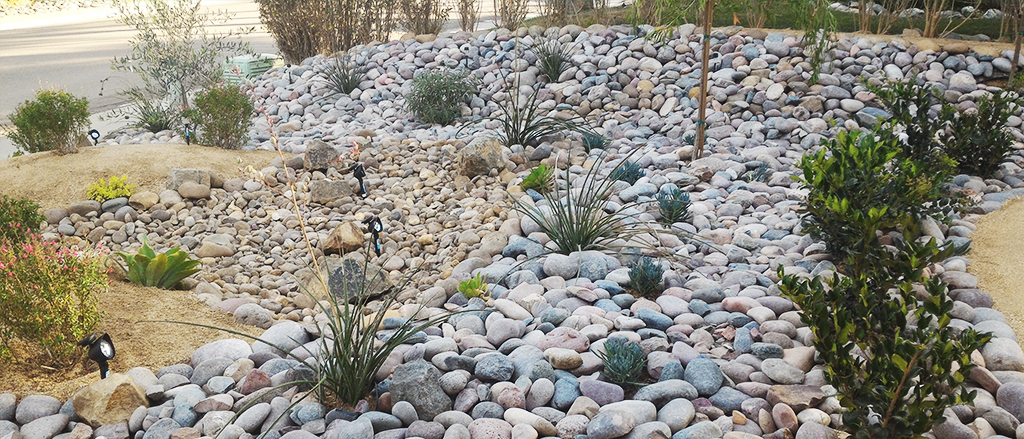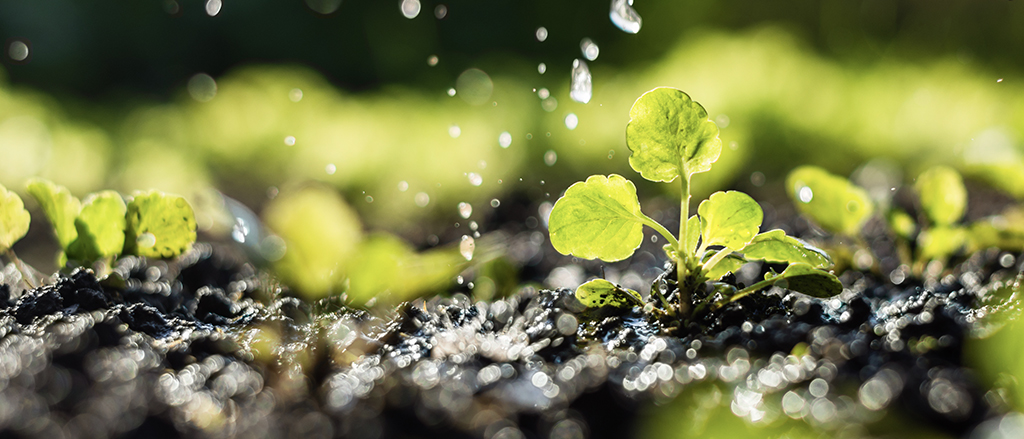When you consider the idea of a drought, you might think of parched desserts and baked flats, where no rain has fallen in so long that the area has been rendered hostile. The reality of droughts is actually quite different from that and has extensively affected much of the nation.
According to Drought.gov, 45.37% of the U.S. was in drought conditions through the end of April 2022. Arizona, Colorado, New Mexico, Oklahoma, and Texas all experienced more severe bouts than before, yet agriculture and industry continue unabated. In residential areas, lawns continue to go down, especially in cities like Phoenix.
The reality of modern American water management is that drought doesn’t have to mean a stop to water usage. It should, however, inspire conservation. Landscaping experts will be at the forefront of a new battle against water waste. Understanding the water usage challenges and then deploying sustainable irrigation strategies in their projects can be a vanguard for better water retention tactics and play a significant role in developing a new, more sustainable situation for every state.
[ez-toc]The individual impact

Americans waste a lot of water every single day. The facts laid out by the EPA can be startling. Businesses should beware of losing their water supplies.
- Property leaks waste up to 180 gallons of water per week – the equivalent of 300 washer loads of laundry.
- Outdoor water usage accounts for as much as 30% of total usage on average, with that rising to 60% in arid regions.
- 50% of the water used outdoors is lost to wind, evaporation, and runoff caused by inefficient irrigation methods.
The last statistic should be most startling for businesses. The simple process of watering their landscaped areas can cause huge amounts of water loss and, by extension, the significant loss of funds due to the excess water costs. Indeed, water loss is significantly detrimental to the bottom line businesses rely on and should be an immediate motivator to start using this precious resource in more efficient ways.
Savings to be made
It’s a given that internal building repairs can be expensive. Simply fixing a leak is sometimes not feasible. Encouraging employees to partake in waste-reducing habits is a good idea, too, but unlikely to create huge savings. Instead, businesses must focus on reducing the amount of water they lose outside – the margin, 50%, is gigantic and has a huge economic impact.
Reports as far back as 2013 have shown the business case for water conservation. The Guardian reported that many businesses perceive pro-environmental work as being costly and undercutting their profits; however, studies have shown that huge savings can be made by firms simply reigning in their consumption. This is especially true for urban businesses, which will benefit from creating efficiencies within their landscape management systems.
There are long-term impacts, too. Most economies experience a significant degree of interdependency between industries and companies, and the U.S. is no different. In a report for their National Drought Mitigation Center, the University of Nebraska outlines how water shortages stemming from frivolous use of the resource will have a domino effect. Less water on the table means farmers are more likely to experience drought, and they’ll be less able to produce food. This will tick its way back up the economic pyramid and cause real issues for businesses in all other industries.
The environmental impact
The environmental impact of drought is not as simple as not having enough water to spray the lawn or having dryer days. According to Environmental Science.org, the harmful effect of long-term drought is already being seen across the world. Soil quality is reducing, impacting the yield of crop farmers.
Weather patterns are altering due to a lack of water evaporating into the stratosphere. Particulate matter is being magnified due to soils’ drying and ejection into the air. It’s not just comfort that’s at stake, but the health and wellbeing of Americans all over the country. Businesses can have a huge impact on preventing climate catastrophe, but they have to adjust today. Proactive work is needed, but professionals should first consider the local economic climate.
City ordinance
There are already significant numbers of cities engaged in authority-led water retention plans. Los Angeles probably boasts the most famous of these. According to the LA Times, the council has adopted a number of measures that prevent the wasting of water by businesses. According to the LA Times, the regulations prohibit overwatering yards, washing cars without a shutoff nozzle, hosing down sidewalks or watering grass within 48 hours after rainfall. These measures will come together, but it’s curious that they all concern one central factor – external water use.
These measures don’t seek to prevent the operation of in-ground irrigation systems. They target highly inefficient ways of watering gardens, such as sprinklers and hoses, and entirely prevent somewhat wasteful practices like watering after rainfall. In general, they fall under common sense – check your local area before developing an irrigation strategy to ensure you’re picking the right tools for the job.
Understanding irrigation

What is meant by irrigation? At its most simple level, irrigation simply means providing water to plants so that they can grow. In farming, it often involves complex systems of ditches and sluices to help control flow. The mechanics and engineering that go into a well-managed farm are phenomenal and include significant efficiency with water usage – the same can’t always be said for residential or commercial lawns. Many businesses and some landscapers do not appreciate the facts of how irrigation works. Various factors need to be considered before water ever approaches a green space:
- The frequency of rain in the local area.
- General air humidity.
- Incoming heatwaves and droughts.
- The vegetation that is present in the yard.
The good news is that poor water habits can be prevented from day one of the landscaping projects. By adopting a strategy that focuses entirely on water conservation, commercial landscaping can be created in a way that is sustainable while providing all of the benefits that green spaces offer, such as a place to enjoy wellbeing and the beauty of nature. Underpinning any project should be an in-ground irrigation system.
In-ground irrigation systems
In-ground irrigation systems are nothing new, of course. Sprinkler systems have existed for a very long time and range in sophistication. The irrigation systems used by professional sports clubs are incredibly high quality, fine-tuned by engineers and landscape professionals to deliver exactly the right amount of water to maintain the quality demanded for sports fields. This is the standard you should be aiming for – though perhaps not with exactly the same level of precision.
Experts outline three key principles to maintain when installing an in-ground irrigation system. The first, deciding on whether to have a spray or drip system, is the most impactful. Evidence points to the latter as being the best option for conservation in certain areas of the landscape.
Drip for conservation
According to Netafim, drip irrigation systems are the most efficient systems for water delivery and are favored by farmers across the country. This delivers small amounts of water to the green area rather than spraying the water up and out into the air. It risks being lost to evaporation and spray on areas that don’t need irrigation.
Treating your green spaces in this fashion – where they are like a crop that needs gentle tending and the drip of water – is a great way to conserve water. Some systems will boast 100% efficiency, meaning that the water will correspond to the terrain and water table with no waste. However, this is dependent on smart moisture monitoring – the second principle.
Rain and moisture monitoring
City ordinances have sought to prevent watering after a rainfall – a simple but important rule. Making the most use of rainfall means that natural water cycles will be preserved, and plants can grow and experience the biological processes that promoted their growth in the first place. Achieving this can be difficult, but it is helped significantly through smart water monitoring.
It is now possible to purchase meters and sensors that can detect the exact level of moisture in the green space and the likely rainfall over the coming hours or days. This allows you to fine-tune your approach.
Using digital technology here is going to be a huge benefit. You can monitor levels, create strategies around irrigation from natural rainfall, and top up the green space as required. Embracing this fine-tuned approach to landscaping data will help to conserve water.
Embracing native plants & xeriscaping

Developing green spaces is all about creating plant life – so let them help you in return. The natural environment of an area dictates, and is dictated by, its wild plant life. They adapt to the natural surroundings and retain and reserve water as appropriate through the years, using their leaves and root systems to release the precious fluid when required. Similarly, succulent plants and cacti are well known for their water preservation talents. There’s a reason they flourish in desert environments.
Look first at natural plant usage. The best step you can take is changing up a landscaping project to include the most natural assemblage of local plants you can. This will also mean that they’re appropriate for the soil mixes used and that they can expect long-term resilience.
When it comes to xeriscaping, you can get creative. Succulents come in a wide range of shapes and sizes and make great decorations. Lithops are a great example of this. With their rounded surfaces and grey-blue exterior, they look like stones in the ground; they can be used to produce edgings and beds within the garden.
Aloe veras and haworthias, conversely, look almost alien, with spiky spines and fins that collect up huge amounts of rainwater – and release it when required. Together with cacti, they can create truly exciting landscapes that will also have a huge benefit on the natural water table and the conservation a landscaping project provides to the local area.
For the business
Of course, this is all cost-related – but businesses should make room in their budget for it. The aforementioned water savings aside, companies also stand to benefit from being “green and clean.” Surveys cited by the World Economic Forum indicate that a huge 75% of consumers place sustainability high in their priorities when purchasing.
Businesses that are making a genuine effort to better manage water can expect a level of appreciation from consumers and, from that, greater sales. In many ways, the consumer sustainability trend is an opportunity that businesses can’t miss – and their landscaping is part of that.
On a deeper level, landscapes that retain and use water properly will also help to reverse any damage caused by overwatering and overfarming. Water resources are scant and precious, and businesses have to do more to help protect them. Starting with their own habits, and then moving into considering their business landscape irrigation strategy, is essential.
There’s a lot of help to be gathered from local authorities – ordinances and strategies put into place by state and federal authorities have the power to positively influence businesses and landscapers and make them really think about how they are going to set up their green spaces and ensure their water usage is fair and sustainable. Building on that, and ensuring that sustainability is the first objective of any new development, will create great-looking grounds that are natural, environmentally friendly, and, more than anything, the water retaining areas of tranquility that landscapes deserve to be.
Get in touch with us today to find out how we can take your landscape from blah to beautiful and keep it that way all year, while you focus on all your other tasks at hand. Your Turf. Our Lawn.

